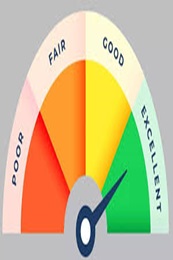How to Utilise Savings Account for a Comfortable Retirement in India
April 15, 2025

When you hear the term retirement planning, your mind probably jumps to investments like mutual funds, PPF, NPS, or maybe even gold. However, few realise the power of a humble savings account in creating a strong financial foundation for your retirement years. While it's often overlooked in favor of more aggressive options, using your savings account effectively can play a pivotal role in securing your golden years.
In this guide, we'll dive deep into how to use a Savings Account for retirement planning. By the end, you’ll have a clear strategy, practical steps, and some real-life examples of how Indians have maximized this often-underappreciated financial tool.
The Basics: Why Your Savings Account Matters
A savings account is often regarded as a place to park your money rather than to grow it. While it’s true that a savings account doesn’t offer high returns like stocks or mutual funds, it provides three key advantages:
- Liquidity: Immediate access to funds in case of emergencies.
- Safety: No risk of losing principal, unlike market-linked investments.
- Discipline: Easy tracking of savings, which helps develop a saving habit.
Given these benefits, your savings account can serve as the cornerstone of a disciplined retirement plan. That said, Ujjivan SFB offers high-interest Savings Accounts that can help your money grow in a safe and secure way.
The Emergency Fund – Your First Layer of Retirement Protection
Use your Savings Account to build a corpus for emergency fund. Financial experts recommend saving at least 6 to 12 months’ worth of living expenses in your savings account to cover unforeseen circumstances, whether it's a medical emergency, a job loss, or a family crisis.
Example: Take the case of Anil, a marketing professional from Mumbai. In his early 30s, he began building an emergency fund, setting aside a portion of his salary each month into a high-interest savings account. By the time he was 45, he had amassed over ₹10 lakh in this fund. When he unexpectedly lost his job during the pandemic, his emergency savings allowed him to cover his family’s expenses for over a year without touching his retirement investments.
Automating Savings for a Consistent Flow
One of the easiest and most effective ways to ensure that you are saving for retirement is through automation. Most banks offer features like automated recurring deposits from your salary account to your savings account. Setting this up ensures a portion of your income goes directly into savings without you having to think about it.
Example: Rekha and Sandeep, a middle-class couple from Pune, started their retirement planning in their late 20s. They set up an automatic transfer of ₹5,000 from Sandeep’s salary account into their joint savings account every month. Over the years, these small amounts compounded into a sizable sum. They began this habit with modest incomes, and by their 50s, they had saved nearly ₹20 lakh.
Tiered Savings for Short-Term Goals
While retirement might be a long-term goal, it’s essential to balance between short, medium, and long-term savings. A smart savings account strategy involves segregating funds for different goals. Many banks now offer "goal-based savings accounts" where you can create sub-accounts for various purposes.
Use one sub-account for retirement savings and others for goals like buying a car, taking a vacation, or your children's education. This compartmentalization helps you maintain focus on retirement while still addressing other life milestones.
Example: Rajat, an IT professional from Bengaluru, uses his savings account creatively. He has opened multiple sub-accounts within his main savings account. One sub-account is designated solely for his retirement, where he deposits ₹10,000 monthly, while others are reserved for short-term expenses like travel and home renovation. This way, he ensures that his long-term goal of retirement doesn’t get overshadowed by immediate financial needs.
Using the Interest Earnings Wisely
Interest earned on savings accounts in India isn’t just passive income – it can be a crucial element of retirement planning. Most savings accounts offer interest rates between 2.5% and 4%. While this may seem low compared to other investment instruments, over a long horizon, the compounding effect adds up. You can maximize the returns by transferring the interest earned into other retirement-focused accounts like PPF or NPS.
Please note that Ujjivan SFB offers more than 7% interest on Savings Accounts. Please check the latest interest rates here.
Example: Seema, a teacher from Delhi, has been using her savings account's interest earnings strategically. Every quarter, when her bank credits interest to her account, she transfers the entire amount into her Public Provident Fund (PPF) account. Over 15 years, this strategy has helped her earn higher returns on her savings while simultaneously building her retirement corpus.
Tax Savings on Interest Income
One major advantage of keeping your retirement money in a savings account is the tax benefit. Interest earned up to ₹10,000 per financial year on savings accounts is exempt from tax under Section 80TTA of the Income Tax Act. By ensuring that your total interest earnings don't exceed this limit, you can enjoy completely tax-free income.
Example: Vishal, a retired government employee, keeps a significant portion of his liquid funds in multiple savings accounts, ensuring that the interest earned stays below ₹10,000 per year. This way, he enjoys the tax-free interest and doesn’t erode his savings by unnecessary tax outflows. Over time, this small tax advantage has made a significant difference in his post-retirement income.
Using Savings Accounts Alongside Other Retirement Instruments
While a savings account alone cannot be the primary vehicle for retirement planning, it works best when integrated with other retirement-specific financial products. For example, you can use your savings account to build a base for more structured investments like NPS, EPF, and mutual funds. Your savings account acts as a buffer, offering liquidity while these other investments work towards long-term growth.
Example: Ajay and Smita from Chennai wanted to diversify their retirement portfolio. They kept three months’ worth of living expenses in a savings account for emergencies. The rest of their retirement savings were directed into Fixed Deposits, NPS and mutual funds through monthly systematic investment plans (SIPs). Their savings account served as an easily accessible safety net, while their NPS and mutual funds provided long-term returns.
Planning for Medical Emergencies
One of the most significant expenses in retirement is healthcare. A savings account can be an ideal place to keep liquid funds earmarked for medical emergencies or health insurance premiums. Given the uncertainty of medical costs, especially in India, having an easily accessible fund for these expenses can protect your long-term investments from being prematurely liquidated.
Example: Vimla, a homemaker from Hyderabad, saw the value of this strategy when her husband needed an urgent surgery. Instead of dipping into their long-term retirement corpus, she used ₹2 lakh from the medical emergency fund they had built in their savings account. This decision allowed them to continue growing their retirement investments without interruption.
A Savings Account as a Bridge in Early Retirement
Retirement is not always a smooth transition, especially if you choose to retire early or semi-retire. During the transition period, you may need liquidity while your pension schemes or investments mature. A savings account can act as the financial bridge during this period.
Example: Prateek and Nisha from Gurugram planned to retire at 55. However, their pension scheme was only going to start disbursing funds at 60. To cover this five-year gap, they maintained a large corpus in their savings account, enough to sustain their lifestyle during these years. Their savings account offered the flexibility they needed without the need to withdraw from long-term investments prematurely.
Final Thoughts
While a savings account shouldn’t be the only tool in your retirement planning arsenal, it plays a critical supporting role. From providing liquidity in emergencies to acting as a tax-saving instrument, a savings account offers multiple layers of protection and convenience.
For Indian consumers, especially those in their 20s, 30s, and 40s, adopting a balanced approach where your savings account complements other retirement products can ensure that you retire comfortably and securely. Start small, stay consistent, and let the power of disciplined savings guide you towards financial independence in your retirement years.
If you're just starting out in your savings journey, opening a Savings Account with Ujjivan Small Finance Bank can be a good start. We have a wide variety of Savings Accounts catering to different financial needs - sign up for the one that meets your financial goals. Alternatively, you can browse through Ujjivan SFB product suite - our wide range of financial products are designed to make your financial life better.
FAQs
1. When should I start saving for retirement in India?
The earlier, the better. Ideally, start saving as soon as you begin earning income to maximise the benefits of compound interest.
2. How much should I save for retirement in India?
Aim to save at least 20-30% of your income for retirement, but the exact amount depends on your circumstances and retirement goals.
3. How often should I review my retirement savings strategy?
Review your strategy annually or whenever you experience significant life changes, such as marriage, job change, or having children.
4. What is the tax treatment of NPS withdrawals?
60% of the NPS corpus can be withdrawn tax-free at retirement, while the remaining 40% must be used to purchase an annuity.
5. Should I prioritize paying off debt or saving for retirement?
It's often best to do both simultaneously, focusing on high-interest debt while contributing to retirement savings schemes like EPF and NPS.
6. How does inflation affect my retirement savings in India?
Inflation can erode the purchasing power of your savings over time, making it important to factor inflation into your retirement planning and invest in growth-oriented options.
Latest Blogs

Telangana Housing Board & KPHB Colony: A Guide to Affordable Urban Housing in Hyderabad
March 14, 2025
As Telangana continues its rapid urbanisation journey, two key housing entities—Telangana Housing Board (THB) and Kukatpally Housing Board Colony (KPHB)—have played critical roles in shaping the state's real estate ecosystem.

Does Checking CIBIL Score Frequently Lower Your Credit Points?
April 07, 2025
Imagine you're planning to apply for a home loan, a credit card, or even a car loan. Naturally, you want to ensure your CIBIL score is in good shape before proceeding.

Explained: Can NRIs Buy an Agricultural Land in India?
April 03, 2025
Real estate investment is often a top priority for Non-Resident Indians (NRIs) looking to retain strong financial ties to India.

How to Improve Your CIBIL Score from 600 to 750: A Step-by-Step Guide
April 02, 2025
Your CIBIL score is like your financial reputation—banks check it before approving loans or credit cards. If your score is hovering around 600, you might face difficulties in securing credit or may get loans with higher interest rates.

What Happens When You Leave Your Savings Account Unused?
April 01, 2025
Imagine waking up one day to find that your hard-earned money is locked away and inaccessible. Sounds stressful, right? This is precisely what happens when you leave your Savings Account inactive for too long.




